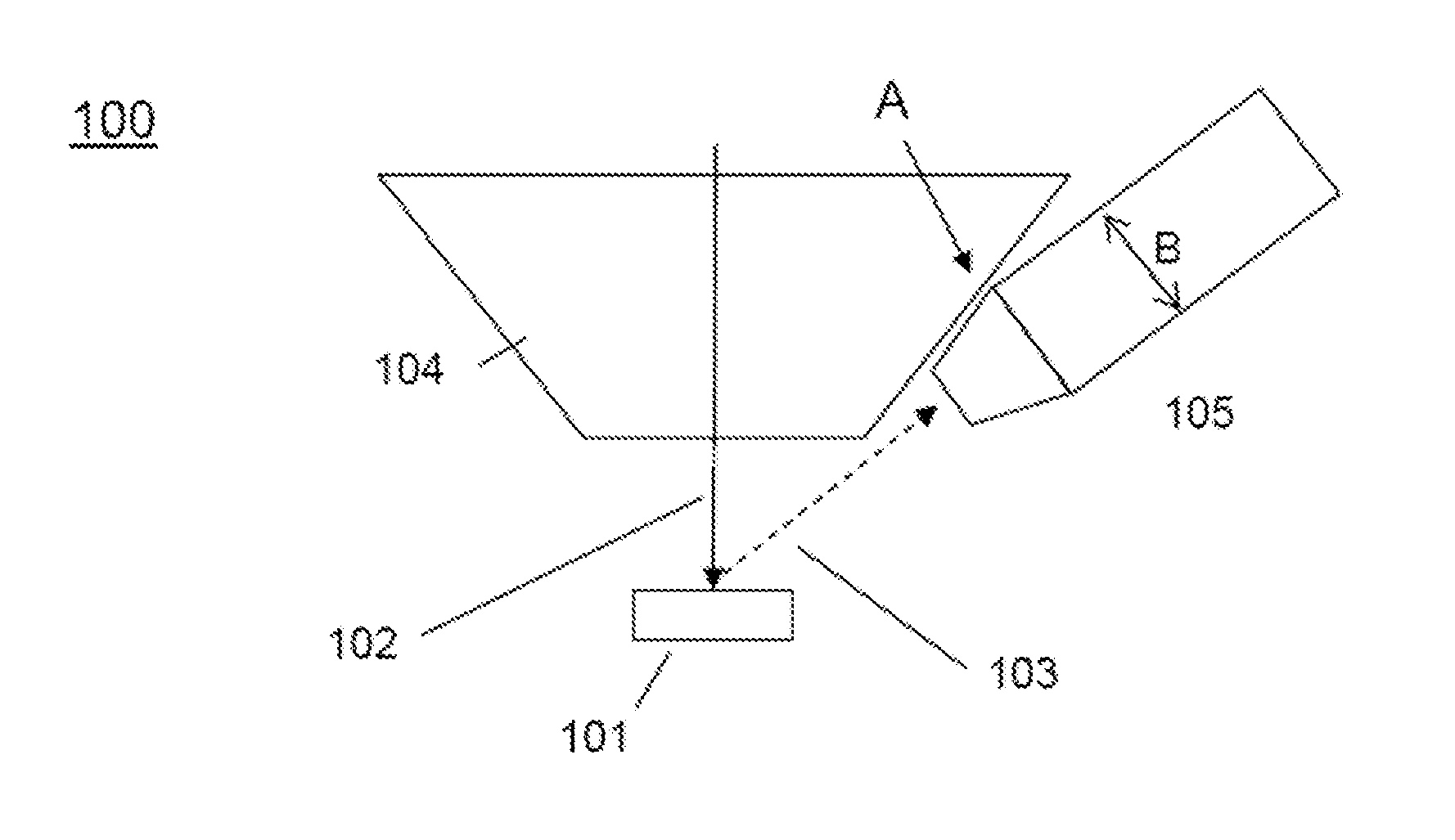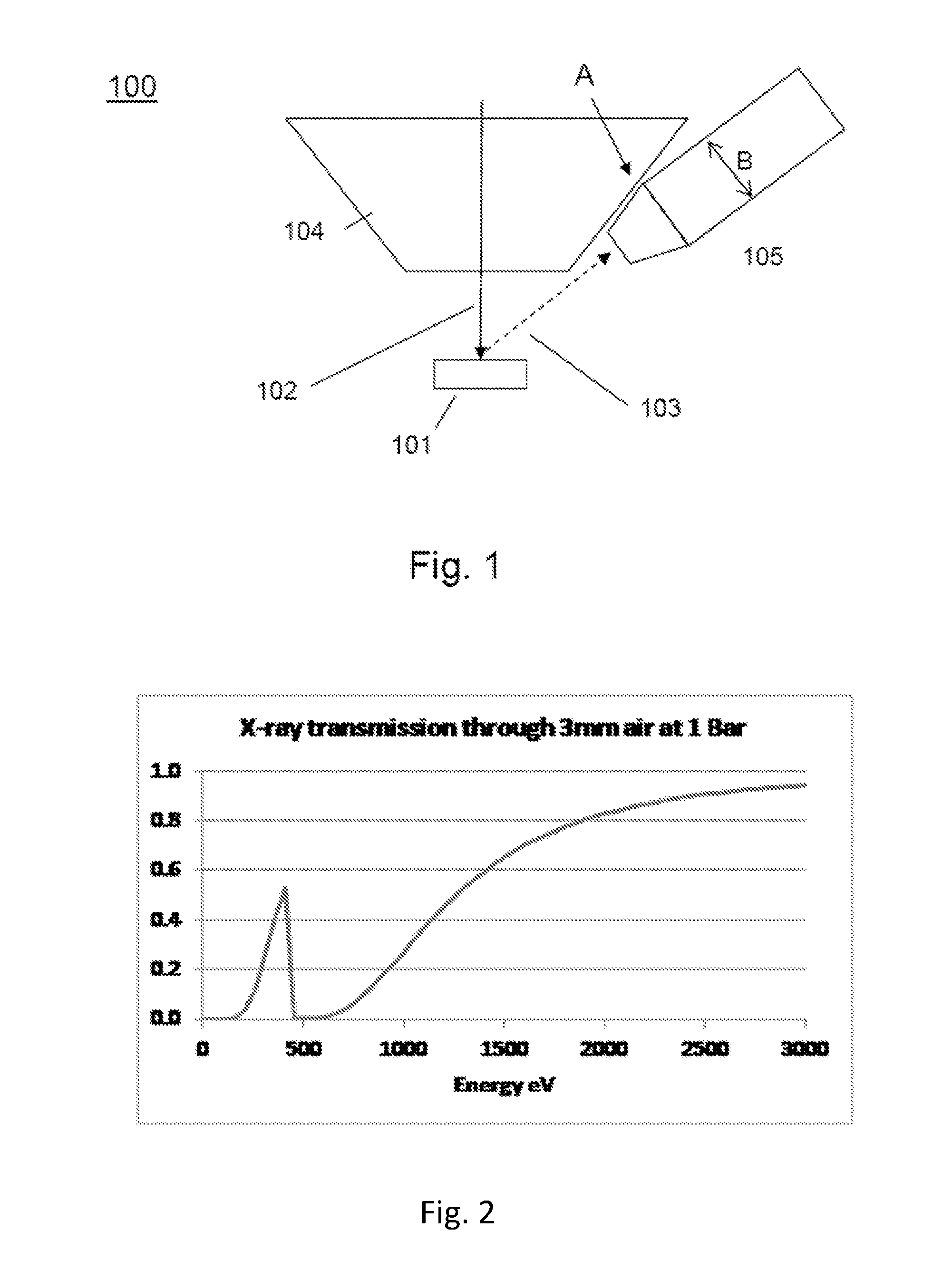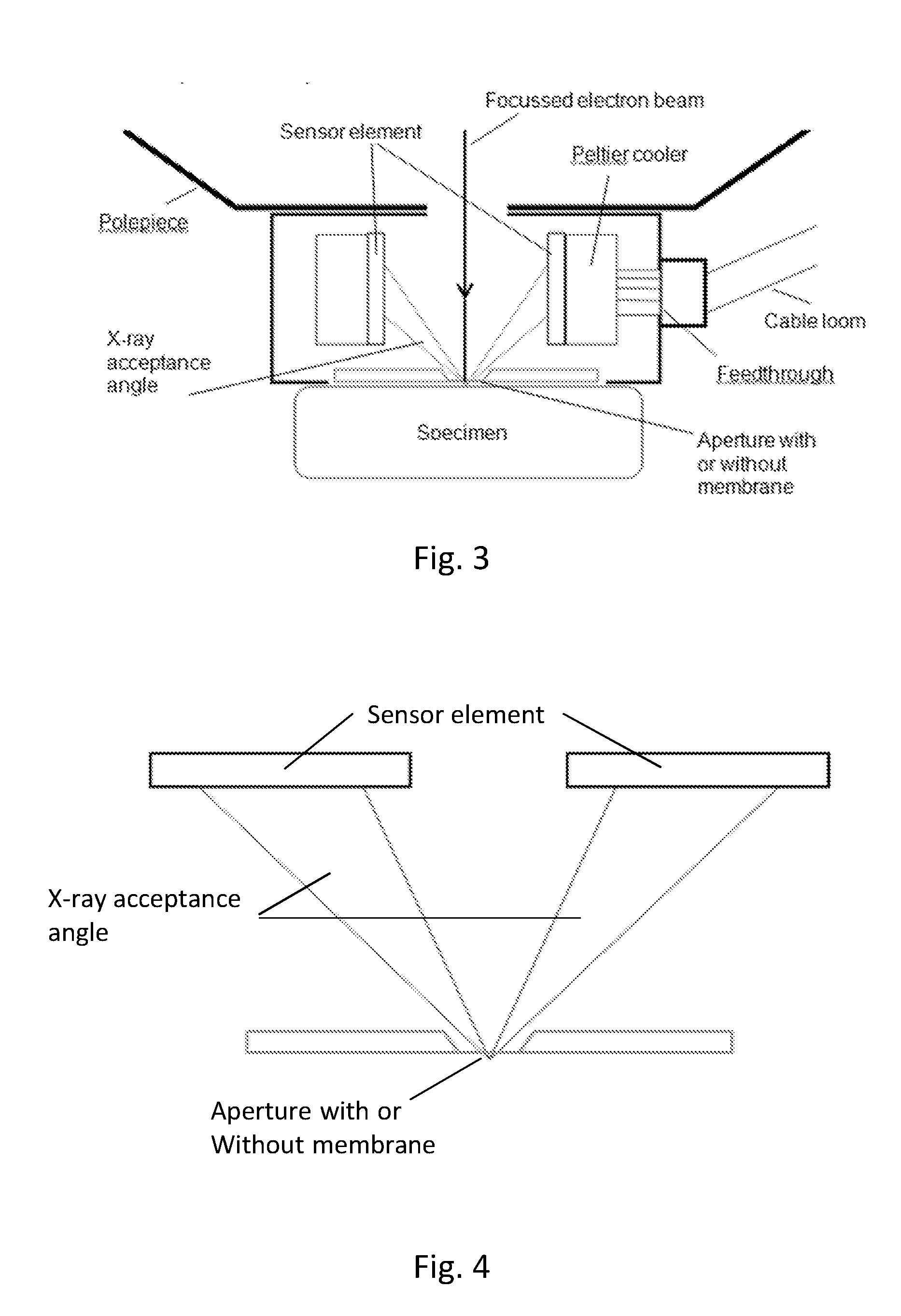X-ray analysis in air
- Summary
- Abstract
- Description
- Claims
- Application Information
AI Technical Summary
Benefits of technology
Problems solved by technology
Method used
Image
Examples
Embodiment Construction
[0033]In one embodiment of the invention shown in FIG. 3, a detector module 2 is shown positioned immediately below the final lens polepiece 3 of an electron microscope 4. The x-ray sensor 5 of the detector module 2 is composed of four individual silicon drift detector (SDD) elements 6 arranged symmetrically around the central axis with their sensitive faces arranged vertically. Each element 6 is 0.5 mm thick and the front surface is 3 mm in height and 4 mm deep. Each element 6 is mounted on a Peltier cooling stack 7 and the electrical connections are taken through a feedthrough and cable loom 8 out to external electronics for controlling the cooling, electrically biasing the detector elements and sensing and measuring the signals. Peltier coolers require a heat sink and are thermally-connected to the casing of the detector module. If the specimen is in full atmosphere, the heat sink can be fins attached to the casing. Alternatively, the casing can be thermally connected to the larg...
PUM
 Login to View More
Login to View More Abstract
Description
Claims
Application Information
 Login to View More
Login to View More - R&D
- Intellectual Property
- Life Sciences
- Materials
- Tech Scout
- Unparalleled Data Quality
- Higher Quality Content
- 60% Fewer Hallucinations
Browse by: Latest US Patents, China's latest patents, Technical Efficacy Thesaurus, Application Domain, Technology Topic, Popular Technical Reports.
© 2025 PatSnap. All rights reserved.Legal|Privacy policy|Modern Slavery Act Transparency Statement|Sitemap|About US| Contact US: help@patsnap.com



